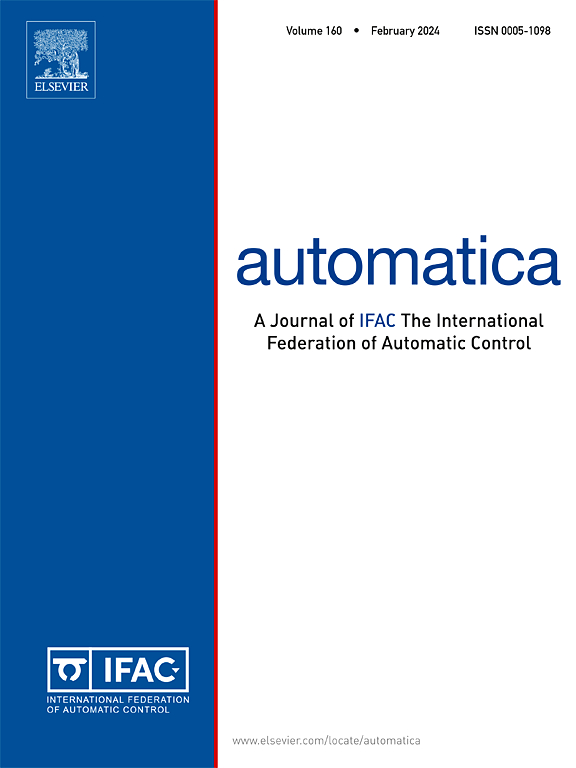微电网微分私有分布式控制的假噪声攻击检测
IF 5.9
2区 计算机科学
Q1 AUTOMATION & CONTROL SYSTEMS
引用次数: 0
摘要
分布式控制中的隐私保护受到越来越多的关注,差分隐私(DP)是保护数据隐私的常用工具,该算法在算法函数中加入了加性噪声。然而,DP可以被假噪声(FN)攻击利用,因为攻击向量可以在DP中伪装成人工噪声。FN攻击很难被发现,因此令人担忧。此外,分布式控制中的DP使得FN攻击检测更加困难。因此,在保护隐私的分布式控制中检测FN攻击是至关重要和具有挑战性的。本文以分布式能源管理系统为控制对象,提出了一种新的点对点攻击检测方法——虚假噪声攻击检测(FNAD)。在FNAD中,每个设备根据来自两跳邻居的数据观察邻居的功率决策,通过卡尔曼滤波器估计邻居的功率决策,并根据每次迭代时卡尔曼滤波器的残数更新每个邻居的检测指标。检测索引是基于信息熵开发的,没有任何FN攻击的先验知识。如果设备的检测索引超出定义良好的阈值,则其邻居可以执行多数投票来确定该设备是否为恶意设备。从理论上证明了FNAD对文献中三种代表性攻击的检测效果,并分析了FNAD与传统方法相比的优势。大量的仿真验证了FNAD的有效性。本文章由计算机程序翻译,如有差异,请以英文原文为准。
False Noise Attack Detection for differentially-private distributed control of microgrids
Privacy preserving in distributed control is getting more attention, and differential privacy (DP) is the common tool to protect data privacy, in which additive noise is applied in the algorithm function. However, DP can be leveraged by false noise (FN) attacks because attack vectors can be disguised as artificial noise in DP. FN attacks are a concern as the stealth attacks are hard to detect. Moreover, DP in distributed control makes FN attack detection more difficult. Hence, detecting FN attacks in privacy-preserving distributed control is critical and challenging. In this paper, taking distributed energy management systems as the control object, we propose a novel peer-to-peer attack detection approach, named False Noise Attack Detection (FNAD). In FNAD, each device observes the power decisions of its neighbors based on the data from its two-hop neighbors, estimates the power decisions of its neighbors by a Kalman filter, and updates the detection index of each neighbor according to the residues of the Kalman filter at each iteration. The detection index is developed based on information entropy, without any prior knowledge of the FN attacks. If a device’s detection index is out of well-defined thresholds, its neighbors can perform a majority vote to decide whether it is malicious. We theoretically prove the detection effect of FNAD against three representative attacks in the literature and analyze the advantages of FNAD compared with the traditional methods. The effectiveness of FNAD is demonstrated by extensive simulations.
求助全文
通过发布文献求助,成功后即可免费获取论文全文。
去求助
来源期刊

Automatica
工程技术-工程:电子与电气
CiteScore
10.70
自引率
7.80%
发文量
617
审稿时长
5 months
期刊介绍:
Automatica is a leading archival publication in the field of systems and control. The field encompasses today a broad set of areas and topics, and is thriving not only within itself but also in terms of its impact on other fields, such as communications, computers, biology, energy and economics. Since its inception in 1963, Automatica has kept abreast with the evolution of the field over the years, and has emerged as a leading publication driving the trends in the field.
After being founded in 1963, Automatica became a journal of the International Federation of Automatic Control (IFAC) in 1969. It features a characteristic blend of theoretical and applied papers of archival, lasting value, reporting cutting edge research results by authors across the globe. It features articles in distinct categories, including regular, brief and survey papers, technical communiqués, correspondence items, as well as reviews on published books of interest to the readership. It occasionally publishes special issues on emerging new topics or established mature topics of interest to a broad audience.
Automatica solicits original high-quality contributions in all the categories listed above, and in all areas of systems and control interpreted in a broad sense and evolving constantly. They may be submitted directly to a subject editor or to the Editor-in-Chief if not sure about the subject area. Editorial procedures in place assure careful, fair, and prompt handling of all submitted articles. Accepted papers appear in the journal in the shortest time feasible given production time constraints.
 求助内容:
求助内容: 应助结果提醒方式:
应助结果提醒方式:


